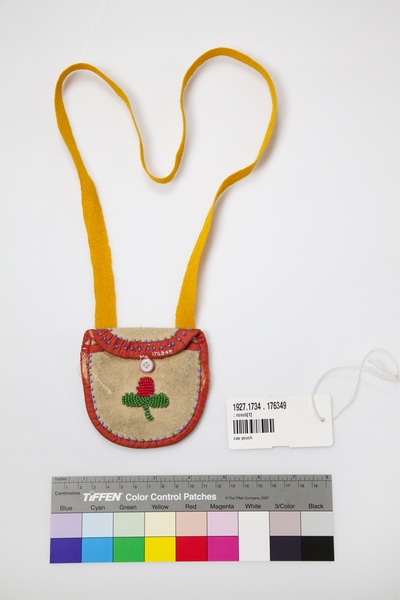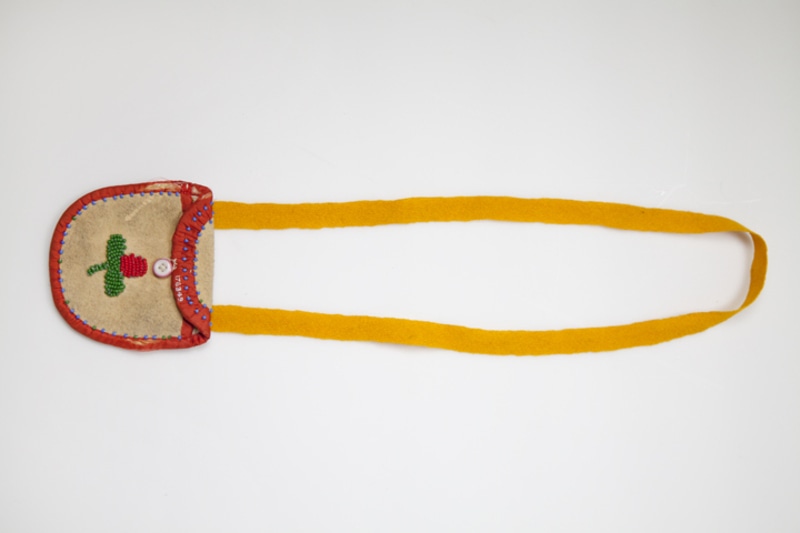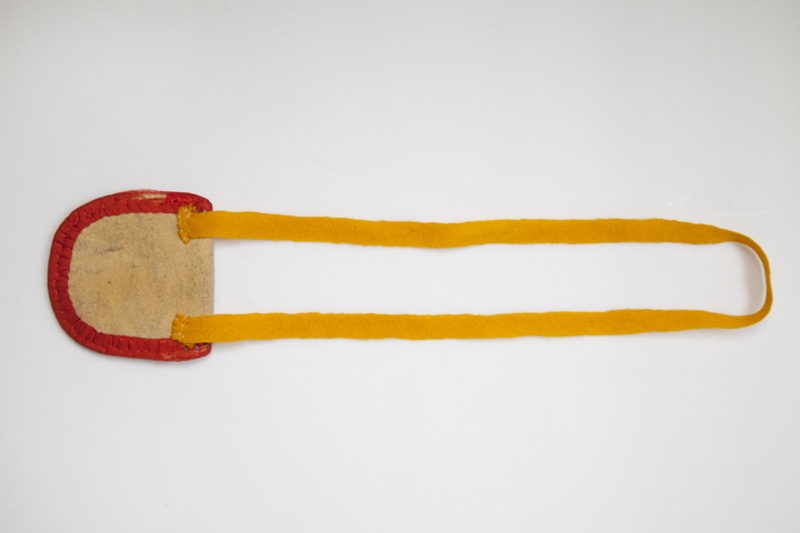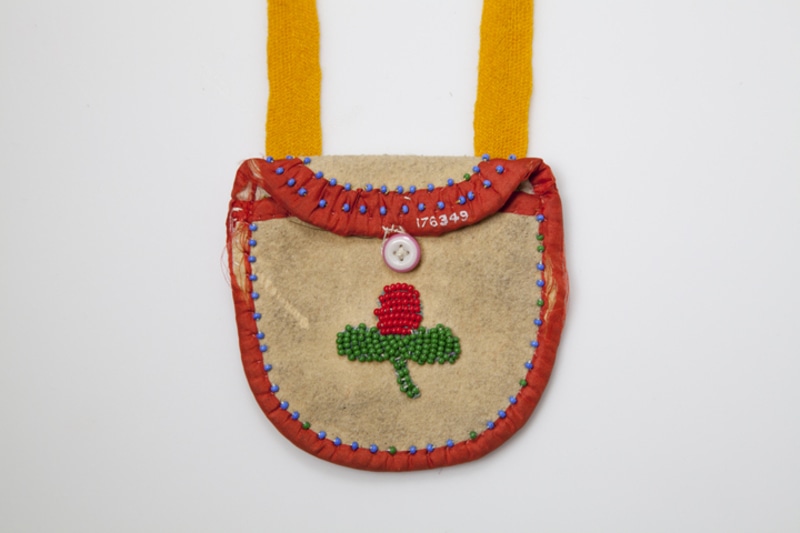cap pouch Item Number: 1927.1734 . 176349 from the The Field Museum




Citations From Vanstone (1982) Article
« Also associated with percussion firearms were cap pouches, which were large enough for the insertion of two fingers (Speck, 1935, p. 213). The collection contains three, all of which are highly decorated. »
« The third cap pouch is made of wool felt and the trim is of red silk. The flap is held in place with a glass button and there is a simple floral ornament in red and green seed beads on the front. Around the edges and on the flap are rows of widely spaced blue and green beads (fig. 22f). »
Vanstone, James W. "The Speck Collection of Montagnais Material Culture from the Lower St. Lawrence Drainage, Quebec." Fieldiana. Anthropology. New Series, No. 5 (October 29, 1982), p.12, fig 22f (p.50).
« Speck (1935, pp. 190-191) has noted that for the Montagnais, the symbolic pictorial representation of a plant or animal was equivalent to the actual plant or animal and those portrayed were believed to come under the control of the individual human spirit. Dreams played a major part in suggesting the relationship between specific animals or plants and an individual. The spirit was strengthened by having its dream promptings obeyed and success in subsistence activities was thereby assured. »
Vanstone, James W. "The Speck Collection of Montagnais Material Culture from the Lower St. Lawrence Drainage, Quebec." Fieldiana. Anthropology. New Series, No. 5 (October 29, 1982), p.10.
Translation Of Citations From Vanstone (1982) Article
« Des étuis à capuchon sont aussi associés avec les armes à percussion, et ils sont assez larges pour y insérer deux doigts (Speck, 1935, p. 213). La collection en contient trois, tous très décorés. »
« Le troisième étui à capuchon est fait de feutre de laine et le rebord de soie rouge. Le rabat tenu en place avec un bouton de verre et il y a un simple ornement de perles fait de graines rouges et vertes sur l’avant. Autour des rebords et sur le rabat se retrouvent des rangées de perles bleues et vertes très espacées. »
Vanstone, James W. "The Speck Collection of Montagnais Material Culture from the Lower St. Lawrence Drainage, Quebec." Fieldiana. Anthropology. New Series, No. 5 (October 29, 1982), p.12, fig 22f (p.50).
« Speck (1935, pp. 190-191) a noté que pour les Montagnais, la représentation symbolique picturale d’une plante ou d’un animal était équivalente à la plante ou à l’animal en question et ils croyaient que les sujets de ces représentations se retrouvaient sous le contrôle de l’esprit humain de l’individu. Les rêves jouaient un rôle majeur en suggérant des liens entre une personne et certains animaux ou certaines plantes spécifiques. L’esprit était renforcé lorsque les conseils exprimés par les rêves étaient suivis et le succès des activités de subsistance était alors assuré. »
Vanstone, James W. "The Speck Collection of Montagnais Material Culture from the Lower St. Lawrence Drainage, Quebec." Fieldiana. Anthropology. New Series, No. 5 (October 29, 1982), p.10.
Item History
- Made in Pekuakami, Lac Saint-Jean, Lake St. John, Labrador, Canada
What
- Name
- cap pouch
- Identification Number
- 1927.1734 . 176349
- Type of Item
- cap pouch
- Material
- “moose skin; red cloth edge; beads” ?
Who
- Culture
- Ilnu, Montagnais and Innu
Where
- Holding Institution
- The Field Museum
- Made in
- Pekuakami, Lac Saint-Jean, Lake St. John, Labrador, Canada
Other
- Nom De L'objet
- Étui à capuchon
- Matériaux
- peau d'orignal; bordure de tissu rouge; perles
- Ethnic Group
- Montagnais
- Collection
- Lake St. John Objects
- Provenience
- North America, Canada, Quebec, Labrador, Lake St. John